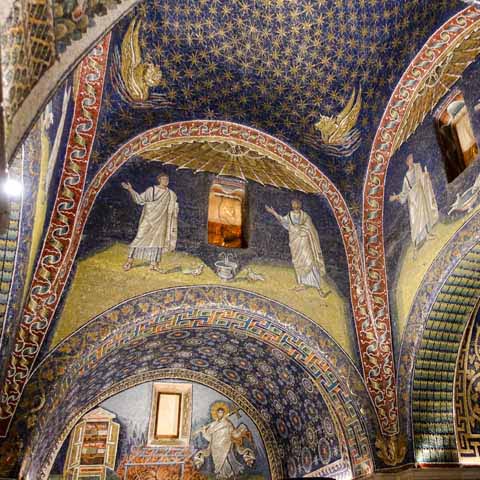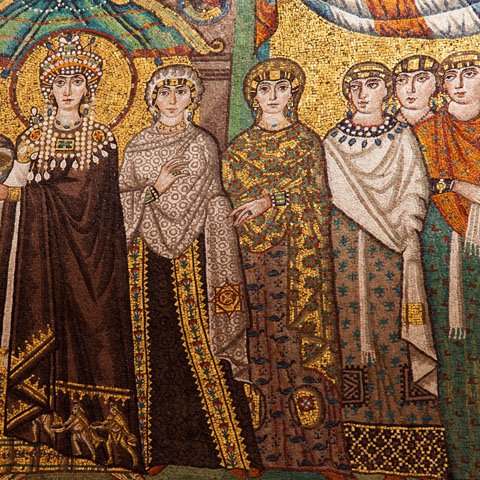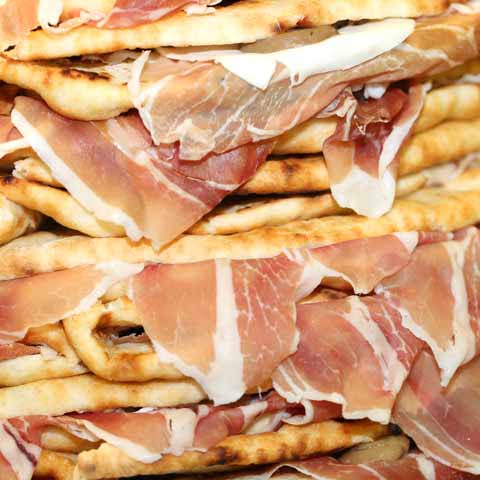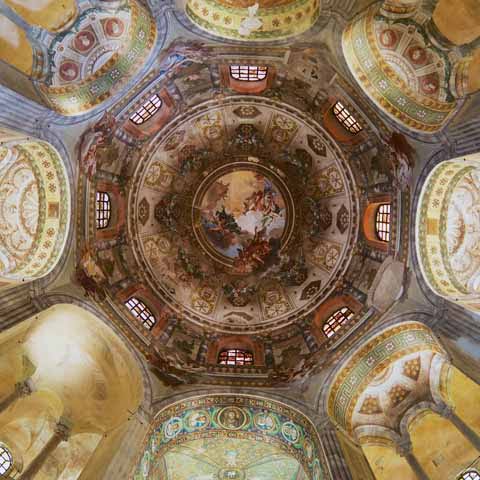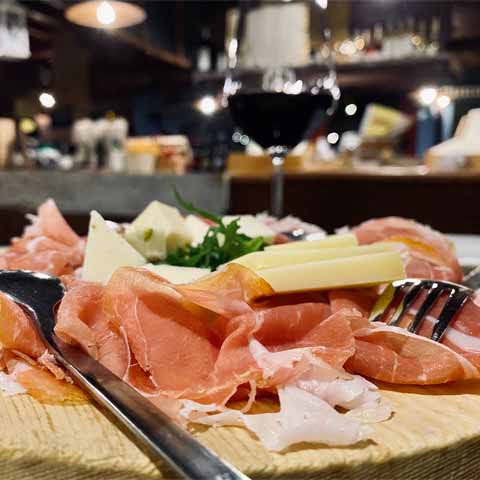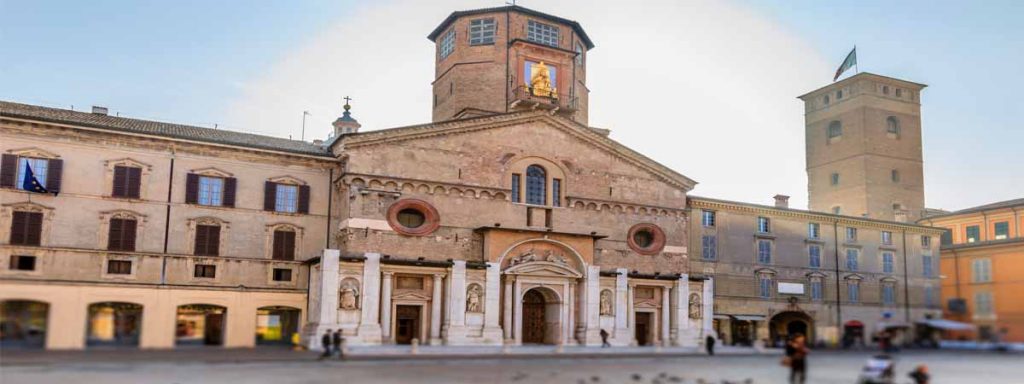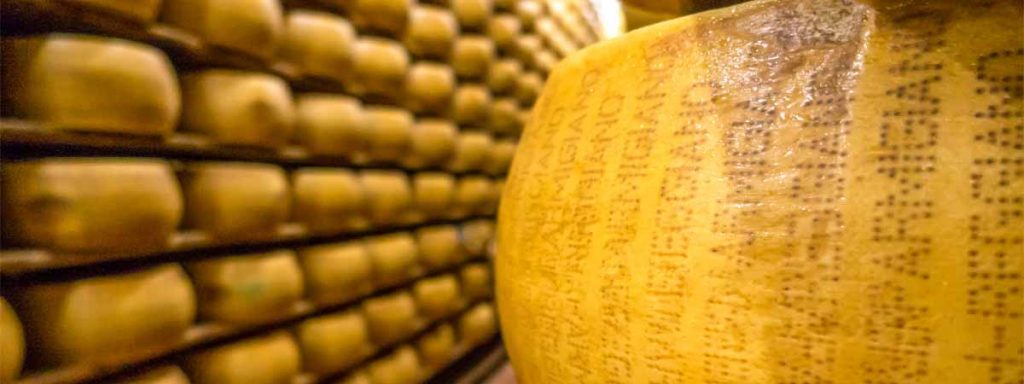In northeastern Italy sits the gorgeous and peaceful town of Ravenna, celebrated for the early Christian and Byzantine mosaics that adorn its churches and palaces. This modest city that is largely off the beaten path from busier neighboring cities such as Bologna and Venice, is a true treasure in the Emilia-Romagna region of the country. This delightfully unassuming town is filled with an abundance of art, architecture, history, and delicious cuisine that makes Ravenna an absolute must-see on your next trip to Northern Italy.
Although it was once a full-scale seaport before the Adriatic waters receded, the man-made Candiano Canal is now what connects Ravenna to the sea. Still, the city is considered to be one of the top seaports in Italy. The town covers a large area and is estimated to be home to over one hundred fifty thousand people that call Ravenna home. With its flourishing population and industry, it only makes sense that the city is the capital city of its namesake province.
This ancient city has roots that can be traced all the way back to 49 BC, but even historically the city has largely maintained a powerful presence for much of its existence. For roughly seventy-five years in the fifth century, Ravenna became the capital city of the Western Roman Empire. After the Roman Empire collapsed, Ravenna became a capital again, this time of the Ostrogothic Kingdom. Throughout the subsequent rule of the Byzantine Empire, the Lombards, and eventually Italy, the city has almost continuously held a title of honor and power.
With more than twenty-one centuries of rich history and tradition, Ravenna is widely accepted as a city of great culture. Particularly of note is the late Roman and Byzantine architecture that is still evident today in structures throughout the city. Ravenna is also home to eight United Nations Educational Scientific and Cultural Organization (UNESCO) World Heritage Sites. These sites are primarily religious in nature and include the Mausoleum of Galla Placidia and Orthodox Baptistry from the fifth century and the Archiepiscopal Chapel, Arian Baptistry, Basilica of Sant’Apollinare Nuovo, Mausoleum of Theoderic, Basilica of San Vitale, and Basilica of Sant’Apollinare in Classe from the sixth century.
The more historic part of the city is considered to be primarily a pedestrian zone with almost all of the traffic being on foot or by bicycle. The beautiful city squares, fountains, statues, fabulous cafés and somewhat narrow side streets give the area a quintessential Italian charm that is often best experienced through a casual morning or evening stroll.
Since Ravenna is an important port for commercial and tourism purposes, it is accessible by multiple modes of transportation, making it fairly easy to come and go. Several major highways including the E55 from Venice, the E45 from Rome, the A14-bis from the city of Bologna, and the regional Ferrara-Rimini axis of SS-16, also known as the Adriatica, provide a route directly to or nearby the city. The Ravenna railway station provides train service to several Italian cities including Rimini, Bologna, Verona, Ferrara, Lecce, Parma, and Milan. And if air travel is more convenient, the closest international airport is in the city of Bologna.
GEOGRAPHY
Ravenna is considered an Italian seaport on the northern cusp of the Adriatic Sea via the Candiano Canal. The anomaly of being called a seaport is that the city does not actually sit upon the coast as it once did. It now appears further inland due to receding waters over the centuries and today is only connected to the Adriatic waters by the canal. The Candiano Canal, also known as the Canal Corsini, was born of an eighteenth-century construction project and now stretches almost seven miles, making it the longest artificial canal in all of Italy.
Almost due north of the city by about two and a half hours is the bustling travel hub of Venice. Approximately an hour to the west of Ravenna is Bologna, and the city of Florence is roughly two and a half hours southwest via the highway. With a number of large and well-traveled cities close, a stay in Ravenna also provides easy access for multiple day trips to nearby destinations.
CLIMATE
Ravenna has a largely agreeable climate for the majority of the year. For the months of May through September, the mostly summer-like climate is warm and dry with highs averaging around the low eighties (Fahrenheit) and lows averaging around the sixties. The late fall and winter months typically average highs in the forties and lows above freezing. The months of October and November historically average the most rain.
ONLY IN RAVENNA
As mentioned above, Ravenna is home to eight remarkable early Christian monuments that are collectively a UNESCO World Heritage Site. These historical monuments are roughly fifteen hundred years old and feature stunning Roman and Byzantine mosaics that thoroughly transform their spaces into unique works of art.
After stepping into one of the city’s historic early Christian monuments, one is immediately taken aback by the detailed and intricate mosaic masterpieces. In general, the mosaics are made of brilliantly colored tiles of roughly a square inch in size that capture every color of the rainbow and then some, with the radiant gold mosaics shining brightly despite their age.
In most of the eight World Heritage Sites in Ravenna, the interior décor of the structures is largely mosaic based. The artwork does not haphazardly and sporadically appear along the walls, but rather covers the majority of them. Rather than the mosaics consisting only of numerous Biblical scenes, the tile work extends past these religious scenes and bleeds well into the surrounding areas and even on the ceiling.
One of the oldest examples of mosaics can be found in the Mausoleum of Galla Placidia, with its colorful ceiling mosaics set against a deep blue background. This structure is thought to be the best-preserved Western Roman mosaic art in the city. Other beautiful examples of mosaic artwork can be found at the Basilica of San Vitale with intricate mosaic scenes found on the walls and ceilings depicting biblical scenes, religious and decorative motifs, and the East Roman Emperor Justinian I and Empress Theodora.
Let the city of Ravenna be a delightful respite from the busier Italian destinations. Fall in love with the beauty and culture of this northeastern city that will capture your heart and have you longing to return before you ever leave.
Travel Guides
The Emilia Romagna Region of Italy
The Cities of Emilia Romagna, Italy
